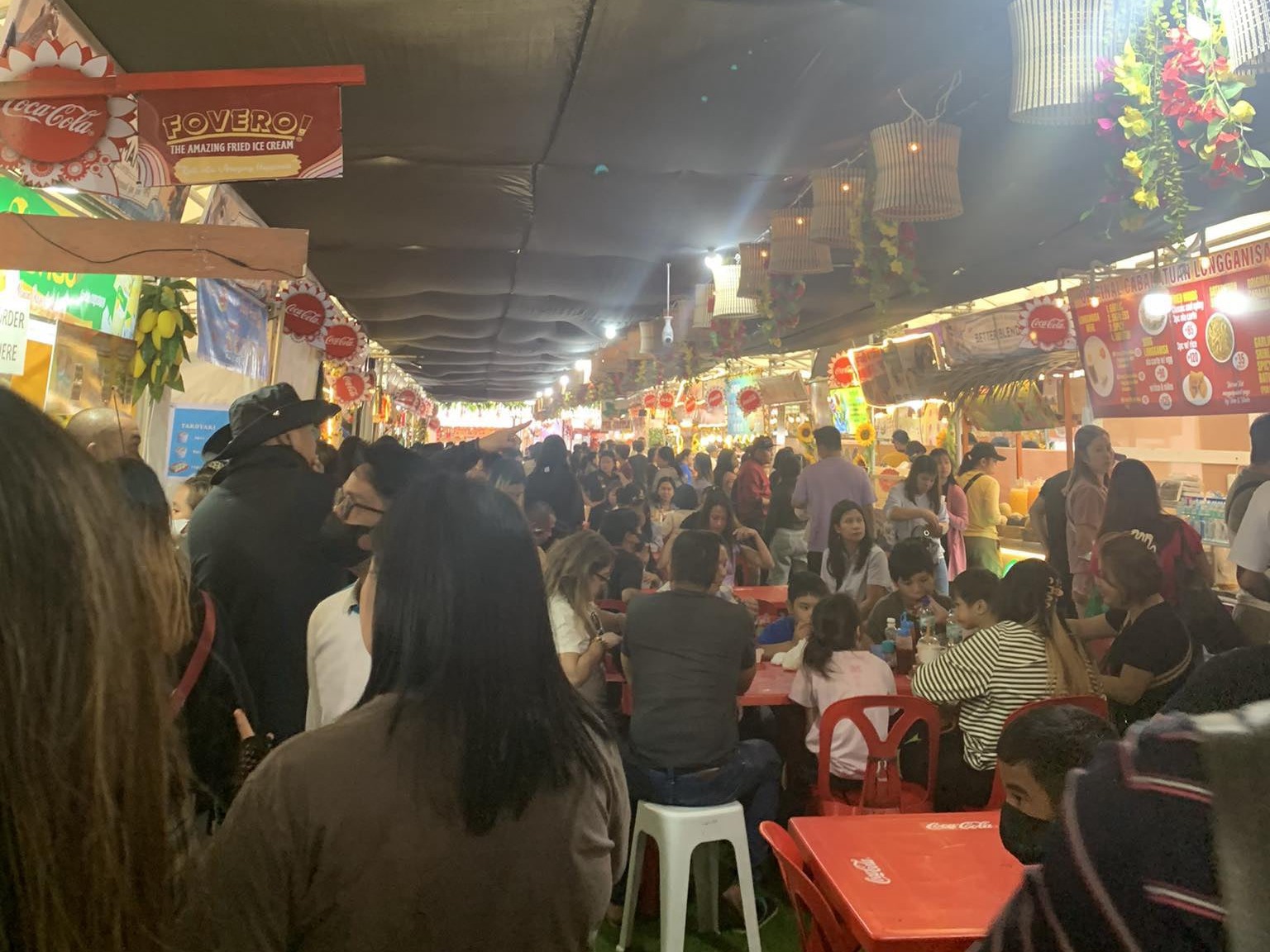
Is the melting pot that is Baguio City melting its culture down with it?
Opinion co-written by Athena Kryshna Salgado & Aleina Bañez | June 1, 2024
Image: A food fair in Baguio City. (Abigail Romualdo)
Lined with green tarp tents on Sundays, Baguio City has been attracting tourists to its heart with the alluring market of you-name-it's — crochet trinkets, second-hand bookstores, clothing stalls of on-trend fashion, but food stalls seem to be the most abundant.
Take the celebration of the Panagbenga Festival. Yearly, month-long festivities are held to celebrate the season of flowers, and though cultural performances are featured and scattered throughout the celebration, does its presence lack in its point of highlighting the vibrancy of Cordilleran culture; or does its presence so suffice in encapsulating the true essence of Cordilleran tradition? In perspective: does the abundance of shawarma, mango graham shakes, and Ilocos empanada stalls echo the essence of Cordillera, or does the tradition of the community dance do enough of the job?
Assistant Professor Verna Bautista from the Department of Economics and Political Science at the University of the Philippines Baguio discussed the closure of Session Road for events that feature various stalls, chalk art, food, crafts, and busking. However, she noted that half of these vendors hail from the lowlands, such as Nueva Ecija and Marikina, thus not representing Baguio exclusively. “Even in the Panagbenga, it’s not just about Baguio,” she remarked. The inclusivity of these events adds vibrancy, attracting tourists and showcasing a broader range of cultural expressions.
Her team studies Baguio as a creative city, observing that the city’s goal seems more oriented towards tourism rather than the local population. The emphasis on trending foods over local Cordilleran cuisine highlights this focus. Events like Mangan Taku, an initiative of the Cordillera Department of Tourism, do showcase food from different provinces, but the overwhelming presence of non-local cultural products at Baguio’s events significantly affect the city’s marketing economy.
“Makikita mo sa lahat ng food events ng Baguio na iba iba talaga yung food na nando'n, hindi lang talaga siya Ilocano food.” She believes that as a creative city, Baguio should aim to balance its tourism appeal with local cultural representation. And this comes with featuring the local culinary culture that the city has.
Baguio, recognized as a creative city of art and folk dance, does not entirely disregard its gastronomic culture. Though the city leverages the image and culture of indigenous people, more representation is needed. “There should be more effort from the government to highlight the creative side of gastronomy in the city,” she emphasized, suggesting that Baguio, as the center of the north, should showcase Cordilleran food more prominently.
The beauty of culture radiates in the practice of preservation, but the immortalization of tradition cannot thrive if it does not change with the ripples that are brought by waves of progress. Though there is a fine line between preserving and commercializing Cordilleran culture, having a market for non-Cordilleran, more “trendy” food does not mean that Cordilleran cuisine does not have its own avenue.
The potential coexistence of Cordilleran and non-Cordilleran food in Baguio’s events was another point Prof. Bautista raised. Fusion cuisine, she suggests, is one way the city’s cultural representation in gastronomy could be enhanced.
But there seems to be yet another conflict that hinders this from fruition. Expensive stall rents also contributed to the factor of local businesses offering local cuisines being overshadowed as the stalls are only accessible to established businesses and hard to access by local businesses.
Despite the profitability concerns of Cordilleran food, allocating space for it in major events would highlight its importance to the creative city’s identity and Cordilleran culture. If the government provided more space and avenues to feature local goods and cuisines, it would significantly enhance the preservation and promotion of Cordilleran culture while offering a balanced representation alongside non-local offerings.
This initiative could transform events like the Panagbenga Festival and the weekly markets on Session Road into more authentic showcases of Baguio’s rich culture, offering tourists a deeper, more genuine cultural experience. By prioritizing local vendors and reducing overly expensive stall rents, the government could encourage greater participation from the local community, boosting the local economy and ensuring that the benefits of tourism are more equitably distributed.
Additionally, this approach could help address some of the economic challenges faced by local vendors, providing them with more opportunities to thrive and contribute to the city’s identity as a creative city.
Suffice it to say that the boundaries that define the difference between cultural representation and the marketability of Baguio City itself have increasingly become blurry. Indeed, Baguio City has become a melting pot of cultures, remarkably across the country. But the flame behind this melting pot — the very people of Cordillera that keep this flame ablaze and vibrant, shall not melt down with it.
May this serve to affirm that, collectively, we are indeed for progress and development. Static ideals and concepts will be cemented in the past if it does not adhere to the fluidity of change. But in such a change, it should be fought to be for the people of Cordillera.